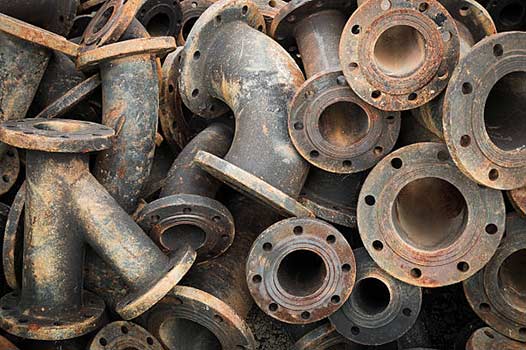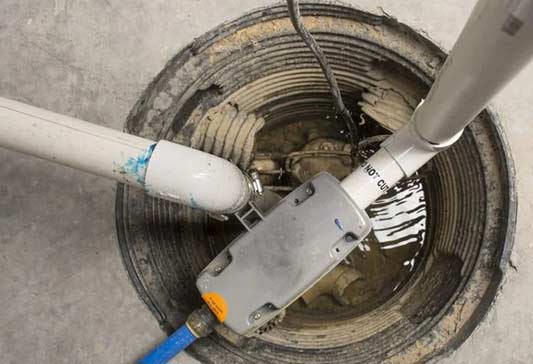
Cast iron stacks are commonly used in plumbing systems for their durability and strength. However, like any other plumbing material, they are not immune to issues. In this article, we will discuss some of the common issues that can arise with cast iron stacks and provide solutions for addressing them. Whether you are a homeowner, a plumber, or simply curious about plumbing systems, this article will provide valuable insights into maintaining and troubleshooting cast iron stacks.
Corrosion
Corrosion is one of the most common issues that can affect cast iron stacks. Over time, exposure to moisture and chemicals can cause the cast iron to rust and deteriorate. This can lead to leaks, blockages, and even structural damage if left untreated.
To address corrosion in cast iron stacks, regular inspections and maintenance are crucial. Here are some steps you can take:
- Inspect the stack for any signs of rust, such as orange or brown stains.
- If you find any areas of corrosion, sand it down to remove the rust and apply a rust-inhibiting primer.
- Seal the repaired area with a high-quality epoxy coating to prevent further corrosion.
- Consider installing a corrosion-resistant lining on the inside of the stack to provide extra protection.
- Ensure proper ventilation to minimize moisture buildup around the stack.
Blockages
Another common issue with cast iron stacks is blockages. Blockages can occur due to various reasons, such as debris accumulation, calcification, or tree root intrusion. These blockages can disrupt the flow of wastewater and lead to backups and unpleasant odors.
To address blockages in cast iron stacks, here are some possible solutions:
- Regular maintenance: Schedule regular inspections and cleaning of the stack to prevent blockages from occurring in the first place.
- Use drain cleaning tools: If you encounter a blockage, you can try using a drain snake or a plunger to dislodge the obstruction. Be cautious not to damage the cast iron stack during the process.
- Enlist professional help: For stubborn or severe blockages, it is recommended to seek the assistance of a professional plumber who can utilize specialized tools, such as hydro jetting to clear the blockage effectively.
Leaks
Leaks are another common issue that can arise with cast iron stacks. The joints between the cast iron pipes can deteriorate over time, leading to water leaks. These leaks can not only cause water damage but also promote the growth of mold and mildew.
To address leaks in cast iron stacks, consider the following solutions:
- Inspect the joints: Regularly inspect the joints for any signs of leakage, such as water stains or dampness around the pipe connections.
- Repair or replace faulty joints: If you identify any leaking joints, you can attempt to repair them using a combination of rubber couplings and epoxy resin. However, if the damage is extensive, it may be necessary to replace the affected sections of the stack.
- Use sealants: Apply plumber’s putty or a suitable sealant on the joints to provide an extra layer of protection against leaks.
- Consider alternative materials: If leaks continue to be a persistent issue, you may want to explore the possibility of replacing your cast iron stack with a more modern and durable material, such as PVC or stainless steel.
Noise and Vibration
Noise and vibration from cast iron stacks can be an annoyance for homeowners. These issues can be caused by several factors, including water hammer, inadequate support, or poor installation.
To address noise and vibration in cast iron stacks, try the following solutions:
- Inspect supports: Check if the stack is adequately supported and secured. Loose or inappropriate supports can contribute to noise and vibration. Ensure that all hangers, brackets, and fasteners are properly tightened.
- Water hammer arrestor: Install water hammer arrestors near appliances or fixtures that may cause water hammer. Water hammer occurs when the flow of water is suddenly interrupted, leading to pressure waves and vibrations in the plumbing system.
- Noise reduction fittings: Consider installing noise reduction fittings, such as foam insulation or rubber gaskets, to minimize vibrations and noise transmission.

Sump pump failure can lead to flooding, potentially causing extensive property damage and posing health hazards.
Sump Pump Failure
In homes with basements or low-lying areas, cast iron stacks are often connected to sump pumps to remove groundwater or wastewater. Sump pump failure can lead to flooding, potentially causing extensive property damage and posing health hazards.
To address potential sump pump failure, follow these steps:
- Regular maintenance: Schedule regular maintenance for your sump pump, including cleaning and testing. This will help ensure that it operates reliably when needed.
- Battery backup: An installation of a battery backup system for your sump pump. This will provide power in case of electrical outages and keep the pump functioning during emergencies.
- Alarm system: Install a high-water alarm system that will alert you in case of pump failure or excessive water levels. This will allow you to take action before significant flooding occurs.
- Professional inspection: Consider having a professional plumber inspect or repair your sump pump system to identify any potential issues and provide recommendations for improvement.
To Conclude
As with any plumbing system, cast iron stacks can experience issues over time. However, by being proactive and addressing these issues promptly, you can minimize the impact on your everyday life and avoid costly repairs. Regular inspections, maintenance, and seeking professional assistance when necessary are key to ensuring the longevity and functionality of your cast iron stack. By implementing the solutions mentioned in this article, you can effectively address common issues and maintain a reliable and robust plumbing system.